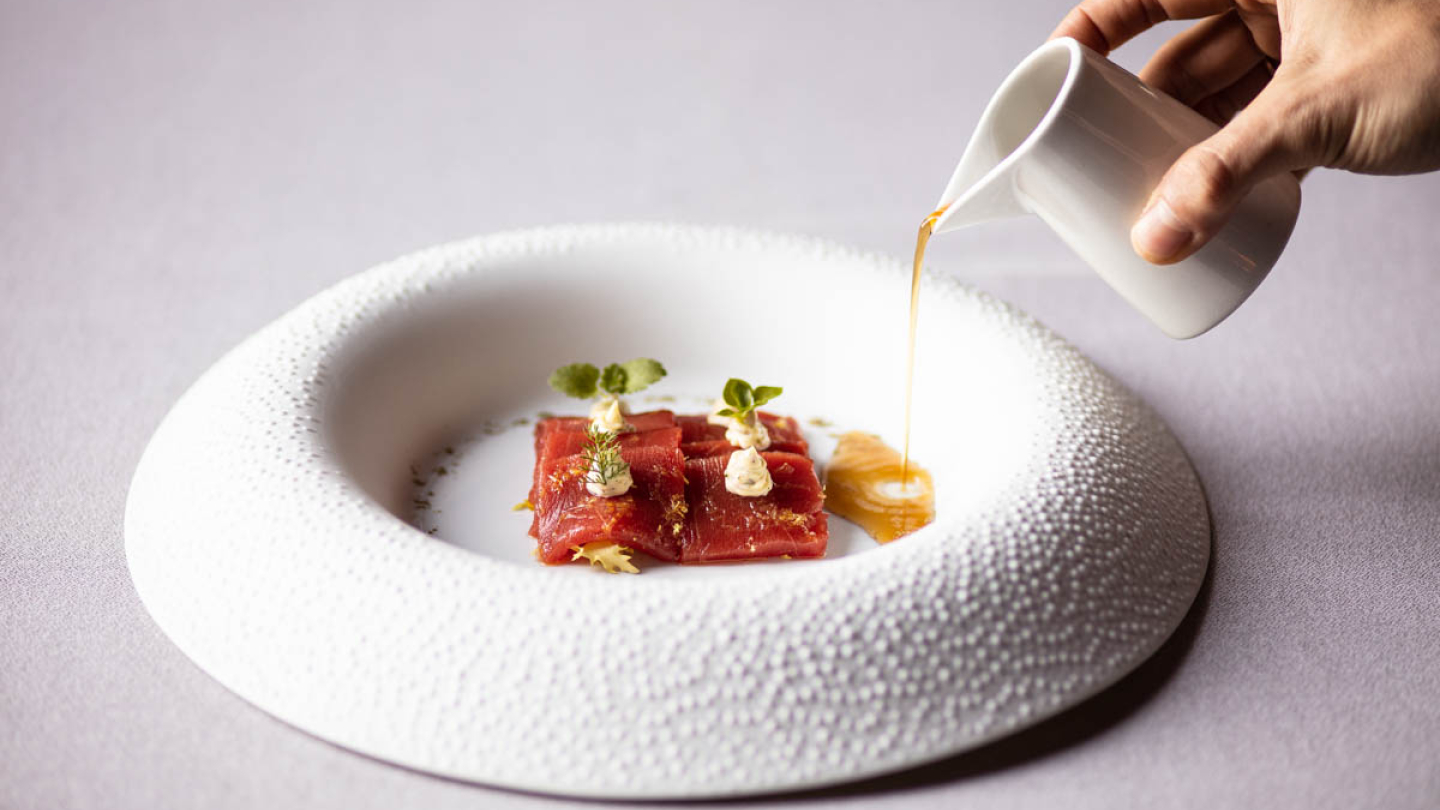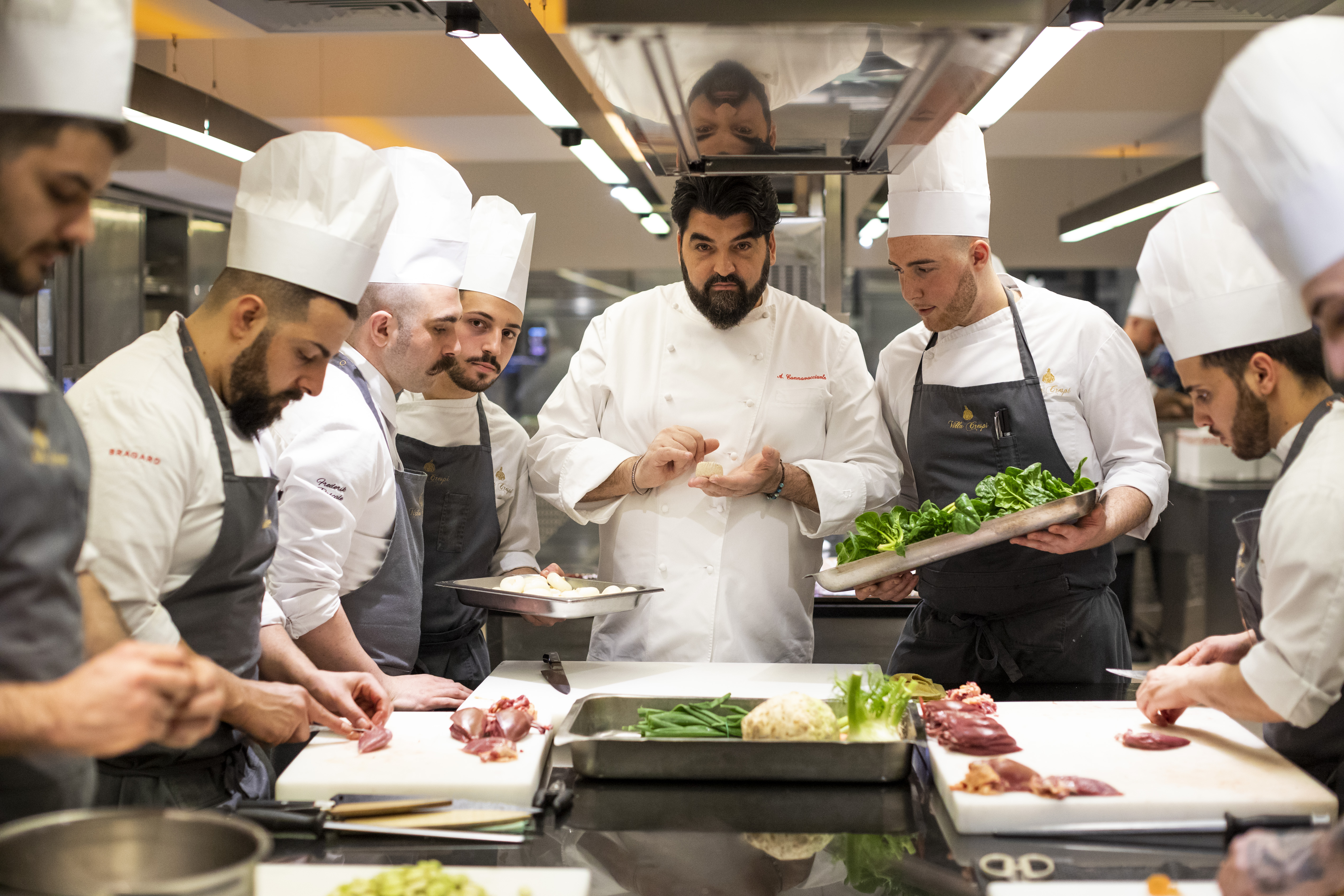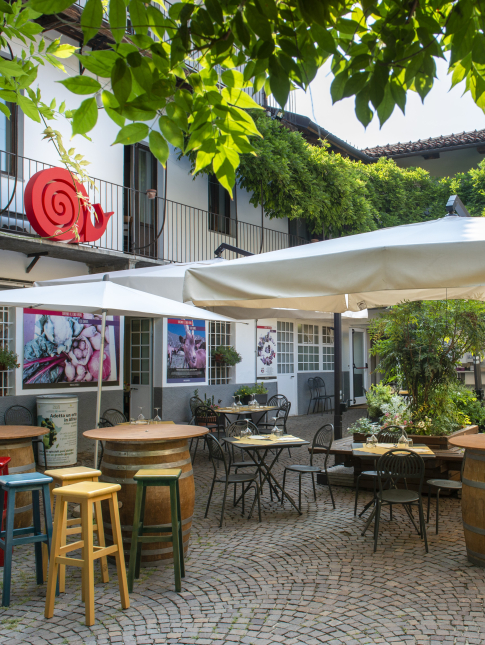
Nips, Sips and Tidbits
Unraveling the enchanting realm of Italian gastronomy: a deep dive into Food, Wine, and Spirits

Italy welcomes a new three Michelin Star restaurant: Villa Crespi by chef Antonino Cannavacciuolo
The restaurant at Villa Crespi, owned by the acclaimed Campania-born chef Antonino Cannavacciuolo, has been awarded the prestigious three Michelin stars, placing it among the best in the world. The cuisine brings together culinary traditions of Campania and Piedmont for a journey of flavors, showcasing exquisite ingredients and fine wines.
Attaining three Michelin stars is a remarkable milestone. The first Italian chef to achieve this feat was Gualtiero Marchesi in 1986 with his restaurant in Milan, and to this day, there are only 12 restaurants in Italy that boast this accomplishment (discover them here).

_______________________________________________________________________________________________
Slow Food: Preserving biodiversity and world traditions
The food sector plays an important role in terms of both preservation and sustainability, not only in our country but worldwide.
To raise awareness on this topic, Slow Food was founded in Bra, Piedmont, as a significant international cultural movement. It was established in 1986 by gastronome Carlo Petrini who continues to serve as the organization's president.
The association involves over 160 countries and was conceived in response to the spread of fast food, junk food, and the frantic habits of modern life. It supports biodiversity and the rights of people to food sovereignty, opposing the standardization of flavors, massive agriculture, and genetic manipulation. Its aim is to increase people's interest in food, focusing on sustainability (avoiding the use of GMOs, for example) and respecting the seasonality of ingredients. Slow Food also deals with the rediscovery of forgotten foods, enhancing local traditions and ancient knowledge preserved in different territories. The ultimate goal is to ensure that everyone has access to "good, clean, and fair" food that can safeguard the land, producers, and consumers.
To support these objectives, Slow Food has launched several projects such as the Wine Bank, a unique venture that aims to promote Italian wine excellences in Italy and abroad through numerous educational, informative, and promotional initiatives. They also established Slow Food committees, a virtual catalog born out of need to safeguard food biodiversity by mapping products that are at risk of extinction (some examples include historic Caraglio garlic, white Pertosa artichoke, red Acquaviva onion and rose syrup), and working to preserve production techniques and traditional crafts.
The committees also take care of welcoming, meeting, and evaluating restaurants that apply to become Slow Food restaurants, sharing the same philosophy of the project.

Osterie d'Italia by Slow Food
Here are some restaurants where you can savor Slow Food Committees:
In Piedmont, at Osteria del Boccondivino in Bra, you can find the Robiola di Roccaverano, the only historic goat cheese in Italy. Moving towards the coast, in Liguria, at A Viassa in Dolceacqua, you will have the pleasure of tasting the three varieties of beans from Badalucco, Conio, and Pigna, cultivated in municipalities with loose, well-drained soils and spring water, rich in minerals. For meat lovers, a visit to Tuscany wouldn't be complete without trying the famous Chianina or Maremmana beef at restaurant Il Grillo è Buoncantore in Chiusi, or the 36-month-aged Culatello di Zibello at Osteria Bottega in Bologna, Emilia Romagna. And finally, in Pozzuoli, Campania, at Ristorante Abraxas, you can discover the ancient Neapolitan tomatoes known as Papaccella.
Discover here the Slow Food Presidia around the world!
_______________________________________________________________________________________________
Vermouth and Casa Martini: a 160-year journey through time
A name that sounds foreign for a product that is actually entirely Italian, Vermouth is a fortified wine that originated in Turin (Piedmont) in 1786. Created by Antonio Benedetto Carpano, a distiller and herbalist who, by blending Moscato wine with aromatic herbs and spices, invented the formula which is still used by the Vermouth product category.
In 1863, Alessandro Martini, an enlightened entrepreneur, and Luigi Rossi, the creative mind whose botanical fragrances teased the noses of passersby on Via Dora Grossa in Turin, created the Vermouth that would achieve international success: MARTINI® Rosso. The recipe for its blend is jealously guarded and kept under lock and key, known only by eighth-generation Master blenders Ivano and Beppe through taste and aroma.
There are several immersive experiences available to participate in and delve into the history and culture of Vermouth, including:
- Visiting the historical Vermouth production facilities in the countryside of Pessione (Turin) with tastings and workshops.
- MARTINI Mixology Class at the Martini Terrace in Milan, celebrating the ritual of aperitivo and cocktail preparation under the guidance of expert bartenders.
- Multisensory Dinner at the Martini room bistro in Milan.
- Historical Vermouth tour in the city of Turin (Piedmont).
- Experience: Create your own Vermouth by choosing ingredients and aromas to formulate your own secret recipe (Available in different cities).

Related articles
10154
Torino (TO)


